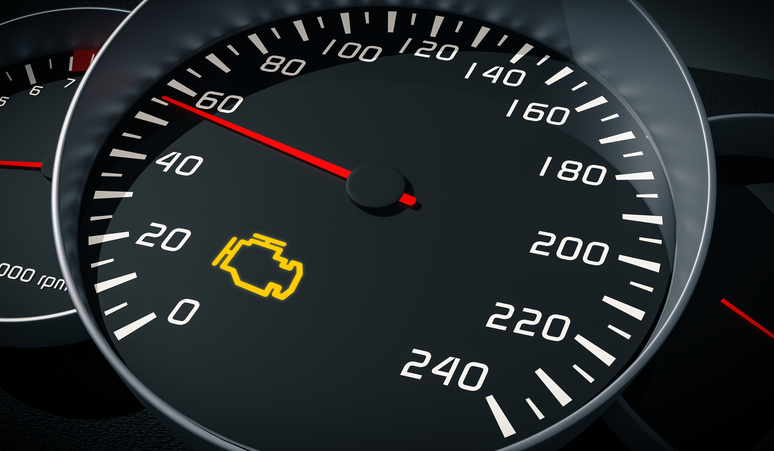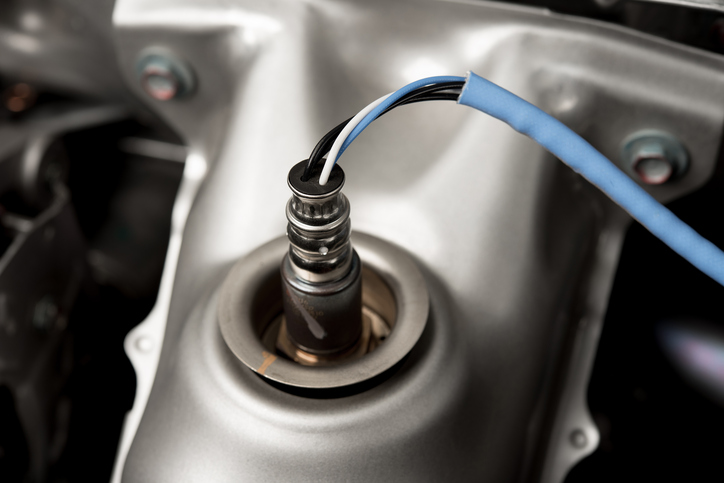"Why Is My Check Engine Light On?" 4 Causes Explained for Students in Auto Mechanic College

The odds are pretty good that, at some point in your life, you’ve driven in a car that constantly had its check engine light on. It seemed like there was no explanation, that the light being lit was as natural as the wind. Of course, that’s not exactly true. If the check engine light is on, it means something isn’t quite right.
The confusion stems from the fact that so many different problems can light up the check engine light. For car owners, figuring out the problem is probably a lost cause. Auto mechanics, though, can draw on their in-depth training to work their magic and get that light to turn off.
Here are just some of the possible causes that could be behind a check engine light.
1: Grads of Auto Mechanic College Know to Check the Oxygen Sensor
One thing about combustion engines is that they produce ash throughout the process of burning. This by-product can accumulate on top of a car’s inner components, preventing them from accomplishing their intended task and—you guessed it—sometimes causing the check engine light to light up.
It’s the oxygen sensor that is often harmed in this situation. This is the component responsible for monitoring the oxygen content of the exhaust, which in turn helps the car’s computer balance the air/fuel mixture for an efficient burn. If the sensor gets caked with ash, it won’t function properly, leading to worse fuel efficiency and the dreaded check engine light informing drivers that something is amiss. Replacing this part is a fairly routine task, and will quickly set many cars right as rain. Graduates of automotive training schools shouldn’t expect to spend more than 30 minutes to an hour fixing up this issue.

2: Catalytic Converters Are Another Usual Suspect for Check Engine Lights
Catalytic converters perform the important function of combining dangerous gases produced by combustion and transforming them into less dangerous ones. For example, by combining oxygen (O) with harmful carbon monoxide (CO), a catalytic converter can produce the less harmful gas carbon dioxide (CO2).
A failing catalytic converter can lead to reduced performance and worse fuel efficiency, and can also light up the check engine light. Left long enough, a failing catalytic converter can even cause a car to fail altogether.
After graduating from auto mechanic college, you’ll likely see repairs for catalytic converters range from a couple of hundred dollars all the way up past the $2,000 mark, so it really is best to fix this sort of problem as soon as possible. If you spot a problem with this part in your future career, try to impress upon your clients the importance of getting it fixed sooner rather than later.
3: Faulty Spark Plugs Are a Common Culprit Mechanics Look For
Spark plugs ignite the fuel and air used to power automobiles. They also degrade over time. As they wear down or get compromised by grime, they stop fulfilling their function. This can make the engine misfire, slow the car, reduce its fuel efficiency, and experience other difficulties. It can also trigger the check engine light as well. Luckily, this is one of the cheaper repairs you can do, with costs sitting around $20 or so for new plugs. It’s a quick fix that can speedily get a client’s car back in tip top shape.
4: A Loose Gas Cap Can Light up the Check Engine Signal
One of the most common reasons for the check engine light being on is simply that the gas cap is loose, and therefore letting in too much air. Tightening the cap and running the car normally will usually sort this out.

This is illustrative of an important lesson that all aspiring mechanics should take to heart. Yes, there are complex systems in automobiles and many reasons that a check engine light may be on. In some cases, though, the cause of the problem is as simple as it gets. Checking these small details can help you quickly resolve a problem and calm a worried customer during your future career.
Are you considering training in auto mechanic programs?
Contact CATI to find the right option for you!
